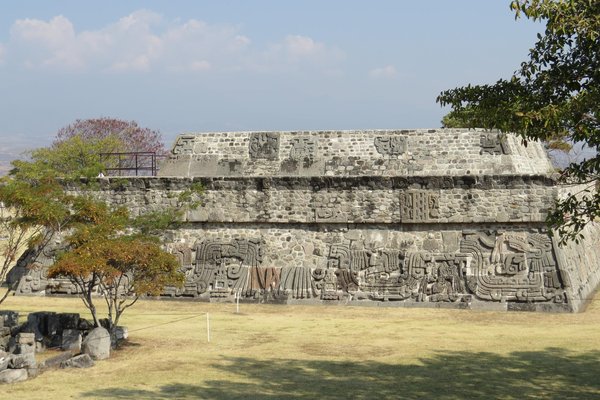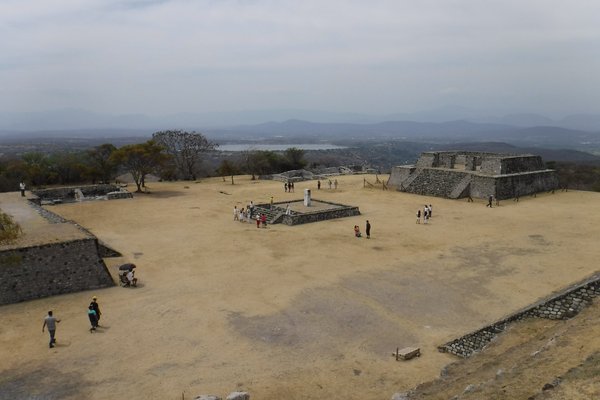Mexico
Xochicalco
The Archaeological Monuments Zone of Xochicalco comprises a pre-Hispanic fortified city from the transitional Epiclassic Period.
The newer societies after the fall of Teotihuacán, Palenque and Tikal were much more militaristic and their cities were usually located in elevated defensive positions. Xochicalco is a well-preserved example of such a fortified settlement based on terraces, retaining walls and ramps. The buildings show cultural influences from various Mesoamerican regions.
Community Perspective: The site is quite spread out and needs about 2 hours to visit. It has a fine hilltop setting with the Pyramid of the Feather Serpent as its highlight. Nan and Frédéric have provided instructions for those who may wish to visit on a public bus.
Site Info
Official Information
- Full Name
- Archaeological Monuments Zone of Xochicalco (ID: 939)
- Country
- Mexico
- Status
-
Inscribed 1999
Site history
History of Xochicalco
- 1999: Inscribed
- Inscribed
- Type
- Cultural
- Criteria
- iii
- iv
Links
- UNESCO
- whc.unesco.org
- Official
-
- inah.gob.mx — Xochicalco
- Related
-
- latinamericanstudies.org — Magazine article from Science about Xochicalco
All Links
UNESCO.org
- whc.unesco.org — whc.unesco.org/
Official Website
- inah.gob.mx — Xochicalco
Related Resources
- latinamericanstudies.org — Magazine article from Science about Xochicalco
News Article
- March 23, 2014 oem.com.mx — Xochicalco closed to hundreds of visitors
- May 23, 2012 upi.com — Ancient tomb uncovered in Pachacamac
Community Information
- Community Category
- Archaeological site: Pre-Columbian
Travel Information
Mexico City hotspot
Recent Connections
-
Perfect Inscriptions
1999 -
Moats
"The lower part is encircled by moated … -
Stone Quarries
"Beneath Xochicalco, archaeologists hav…
Connections of Xochicalco
- Individual People
-
-
Visited by Alexander von Humboldt on his travels
Visited in 1803/4. In 1810 he published a description and plate.
-
- History
-
-
Fusion
fusion of cultural elements from different parts of Mesoamerica (AB ev, crit iv)
-
- Architecture
- World Heritage Process
-
-
Perfect Inscriptions
1999
-
- Religion and Belief
-
-
Feathered serpent
Pyramid of the Feathered Serpent
-
- Human Activity
-
-
Locations for playing sport
Ballcourt -
Stone Quarries
"Beneath Xochicalco, archaeologists have recorded a system of man-made tunnels resulted from the limestone quarries used to construct the site. The Central Acropolis lies on top of a mountain whose internal caves were artificially remodeled to create a series of galleries." and " Beneath this platform is to be found the entrance to the caves that were used in the early phases of occupation for quarrying building materials. Later it was modified as an observatory for studying the heavens and for ceremonies." (AB eval) -
Man-made Terraces
"The main ceremonial center is atop an artificially leveled hill, with remains of residential structures, mostly unexcavated, on long terraces covering the slopes" W(wiki)
-
- Constructions
-
-
Moats
"The lower part is encircled by moated walls, pierced by defended entrances" (AB ev) -
Pyramids
-
Passage of the Sun
The "Observatory" Cave is thought to be a "Zenith Tube":- In the 105 days running from April 30 to August 15, the sun shines into the cave. In the sun's movement towards the Tropic of Cancer and upon their return, respectively, on May 14/15 and 28/29 July, the sun is at its zenith and the astronomical noon, the beam of light falls directly through the chimney showing the image of the sun on the floor of the cave -
Stelae
Plaza of the Stele of the Two Glyphs -
Cisterns
... includes a large rainwater cistern that formed part of a complex water system covering the whole settlement (AB ev) -
Baths
one of the most magnificent temazcal (steam baths), located near the ball-court and used for purification in the ball-game ritual (AB ev) -
Protective Shelters
Over the Rampa de los Animales
-
- Timeline
-
-
Built in the 7th century
founded in the second half of the 7th century
-
- WHS Hotspots
-
-
Mexico City hotspot
Bus via Cuernacava (can take up to 3h in total)
-
- Science and Technology
-
-
Astronomy and Astrology
Astronomical observatory: "The observatory is a cave modified to allow study of the movement of the sun. ....In the 105 days running from 30 April to 15 August, the sun shines into the cave. In the sun's movement towards the Tropic of Cancer and upon their return, respectively, on 14/15 May and 28/29 July, the sun is at its zenith and the astronomical noon, the beam of light falls directly through the chimney showing the image of the sun on the floor of the cave. Surely, taking advantage of the solar phenomenon, the site was also used for religious ceremonies." (wiki)See en.wikipedia.org
-
News
- oem.com.mx 03/23/2014
- Xochicalco closed to hundreds of v…
- upi.com 05/23/2012
- Ancient tomb uncovered in Pachacam…
Recent Visitors
Visitors of Xochicalco
- Alberto Rodriguez Gutierrez
- Alejandro Lau
- Alexander Lehmann
- Alex Baranda
- Allegrazwindow
- Anna Wludarska
- Argo
- Atila Ege
- Badwater
- basementonline
- brendairala
- Can SARICA
- Carlo Sarion
- Carlos Sotelo
- Caspar
- cflw
- Cheryl
- Christine
- Clyde
- CynthiaSam
- Daniela Hohmann
- Dimitar Krastev
- Els Slots
- Erfe91
- Erik Jelinek
- Eva Kisgyorgy
- Fan Yibo
- Fede1203
- Feldhase
- Francky D'Hoop
- Frédéric M
- GeorgeIng61
- headventure
- Iain Jackson
- Ian Cade
- Ivan Rucek
- Jana and Matt
- Janos
- Jarek Pokrzywnicki
- Javier Coro
- Jawnbeary
- Jay T
- Jean Lecaillon
- Jens
- João Aender
- Joel on the Road
- KarenBMoore
- Kasper
- Kurt Lauer
- Lara Adler
- Liamps91
- lichia
- Lucas Del Puppo
- Ludvan
- Luis Filipe Gaspar
- Martina Rúčková
- Matthewsharris
- Michael Novins
- Miguel Marquez
- Mihai Dascalu
- Mikko
- MMM
- Mstrebl1990
- nan
- Nihal Ege
- Philipp Leu
- Philipp Peterer
- Piotr Wasil
- puessergio
- Randi Thomsen
- Rick Ohm
- RobRos
- Roger Ourset
- Roman Bruehwiler
- Sergio Arjona
- Shandos Cleaver
- sibariam
- Simonf
- Solivagant
- Stan
- Stanislaw Warwas
- Svein Elias
- Szucs Tamas
- Taotao Chen
- Ted Coombs
- Thomas Buechler
- Thomas van der Walt
- Velvetlapis
- Wojciech Fedoruk
- Xiquinho Silva
- ZCTLife
- Zoë Sheng
- Zos M
- ZZSong
Community Reviews
Show full reviews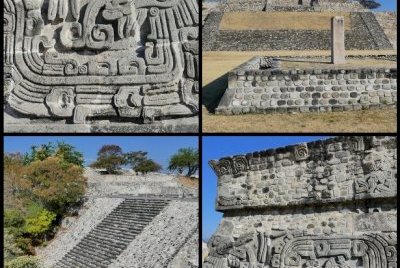
I visited this WHS in December 2021. After we were forced to change plans and sleep in a motel close to Xochicalco instead of Cuernevaca, we woke up early to be the first visitors of the morning and also avoid any possible disruptions from the nearby demonstrations and protests. Not only were we the first visitors but we were also the only visitors till we left a couple of hours later.
Xochicalco's heydays came after the fall of Teotihuacan and it has been speculated that Xochicalco may have played a part in the fall of the Teotihuacan empire. The architecture and iconography of Xochicalco show affinities with Teotihuacan, the Maya area, and the Matlatzinca culture of the Toluca Valley. The absolute highlight of this WHS is without any doubt the Temple of the Feathered Serpent with fine stylized depictions of the Feathered Serpent deity in a style which includes apparent influences of Teotihuacan and Maya art. I was also surprised by the number of huge pyramids, platforms and ball courts as well as residential or cerimonial buildings which lack the intricate decorations of the Temple of the Feathered Serpent but are still worth viewing as an impressive series of complexes which once made up a sizeable city with a population of around 20,000 people.
Most if not all stelae and statues can be seen at the National Museum of Anthropology in Mexico City and although the small museum of Xochicalco (usually included in the entrance ticket) was closed …
Keep reading 0 comments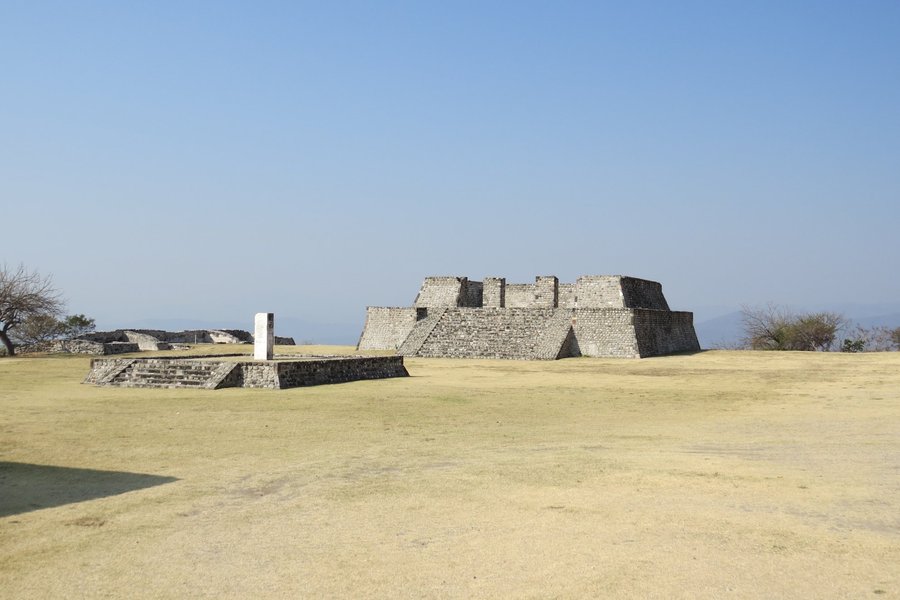
Time of visit: November 2021
Duration of visit: 2 hours
Mode of transportation: by rental car, day trip from CDMX
Review and experience
My initial expectation of Xochicalco was just "a little known Mesoamerican pyramid site," especially after damaging our rental car en route in Cuernavaca and feeling grumpy because of the very dumb mistake I made, but I left impressed and with a new understanding and appreciation of the Epiclassical Period that I hadn't previous read about (unless I fell asleep during this section of the lecture in university).
The UNESCO OUV text provides a great summary of the significance of Xochicalco, and I whole-heartedly agree with its OUV and basis of inscription. Its uniqueness lies in that Xochicalco is a well-preserved site from an interesting and messy period of Mesoamerican history. During this period, the Epiclassical Period, large Classical Period cities of Teotihuacan, Monte Alban, Tikal, Palenque, and Calakmul had begun to collapse. Furthermore, despite its proximity to Teotihuacan, the strong presence of Mayan influence so far north fascinated me. Its position on top of a hill was refreshing, both from a militaristic history that carried significance to the site but also for the beautiful perspectives of the valleys below. I didn't get a chance to visit Monte Alban, but from the layout shown in the National Museum of Anthropology, I'd imagine it's somewhat akin to that site.
Given our expectation for the site was low, we were continually impressed on our …
Keep reading 0 comments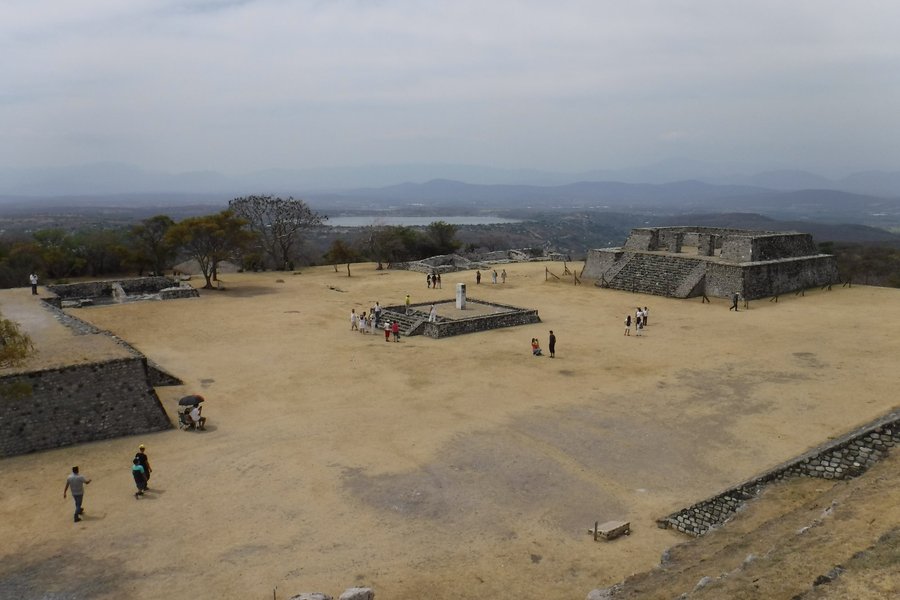
I visited Xochicalco on my Mexican trip in March 2019. Unlike other Mesoamerican WHS, this archaeological site does not stand out for its impressive pyramids or other major constructions. It is rather a well maintained and cohesive ensemble of buildings which forms a complex with a high density of constructions.
As described by others, I traveled by public bus from Cuernavaca. I first visited the nice museum and then walked to the site. It sits atop a mountain with great vistas on the surrounding valleys. The defensive aspect of this city built in troubled times stand out and, alike previous reviewers, I found it similar to Monte Alban. I had a map of the site (I don't remember if they give it at the museum or the tourism office in Cuernavaca), but the path is well marked and many interpretive boards allow you to understand what you witness. Few buildings stand alone as exceptional (probably only the finely ornate Pirámide de Quetzalcóatl). I asked an adorable Mexican family to take a picture of me in front of this temple and befriend with them. Even thought the rest of the site is not artistically or architecturally jaw-dropping, this site still forms a coherent ensemble. Ball courts, plazas and ruined buildings are to be seen. It is a great half day trip and a pleasant dive in the history of a lesser known civilization.
When I visited in 2019, the observatory was still closed following the 2017 earthquake (alike many buildings …
Keep reading 0 comments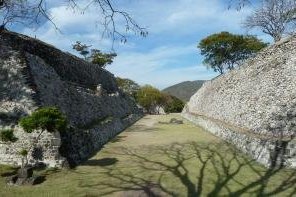
There was just something very enjoyable about the place. Its setting on top of a hill, its immaculately maintained grounds and impressive ruins provided a wonderful morning break from Cuernavaca.
Despite my limited efforts I had somewhat slipped into the trap Paul describes below, with idea that pre-hispanic Mexican cultures were either Aztecs or Mayans, so it was very enlightening to discover something of a hitherto unknown culture. My quick trip through the onsite museum helped pick out the most interesting parts for me, and helped me interpret the various structures and ruins.
Clambering over the pyramids and moving from one plaza to another it was very easy to feel that this place was once a real city, rather than just a series of archaeological ruins. The pyramid of the Plumed Serpent was a real highlight. I also visited the observatory, which was dark, hot and very humid.
There was something rather special about my first sighting of that defining Mesoamerican structure; a ball game court. I know there are religious aspects to it that I don't currently comprehend, however it was so identifiably a sports stadium, I couldn't help but get that pang of excitement I get from walking into a modern day arena.
After a very pleasant walk around I was heading back on the surprisingly well signposted roads back to Cuernavaca having had a very enjoyable morning getting to know a culture I previously had no knowledge of.
[Site 7: Experience 7]
Keep reading 0 comments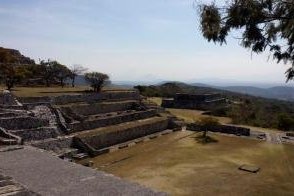
Xochicalco was the third ruin I visited while in Mexico. As part of my quest, I visited several more. However, I still have a fond memory of the sight and feel it is deservedly listed as WHS.
Key reason for me that make the sight special is it's location. Built on top of a hill it feels like a fortress meant to protect its inhabitants. I was reminded of the Acropolis or a medieval castle. This is very different from most other ruins I saw in Mexico, apart from Monte Alban.
I also enjoyed the gardens greatly. Not sure why, but it seems they had a good gardener and the sight feels a bit like a park.
Logistics
Getting to Xochicalco is fairly straightforward. Good busses run hourly from Mexico City (South) to Cuernavaca. And similarly from Cuernavaca to the sight itself dropping you off at the entry to the museum.
Getting away from Xochicalco cost me 2.5h. Everyone told me the good bus that took me there would show every hour. It didn't show for two hours. My guess is that the drivers, don't really like taking the detour. So they skip on the stop and go directly to Cuernavaca. Instead, take the 3rd class bus to Cuernavaca from up the hill. It will not drop you at the right bus station in Cuernavaca and you have to make your way through the city to get to the Mexico City bus.
While …
Keep reading 0 comments
Not sure where to write this... Anyways Xochicalco site is closed since 2 days because of a protest of local farmers. People trying to get close to the gates are sent away with machetes. My guide didn't know anything about it, so I got there this morning (March 22nd 2014) and I witnessed the unpleasant scene. Against more than 100 people, there wereonly a couple of police patrols. Hopefully the situation will be cleared soon, but I've missed the visit to the site, since my next days are fully booked. Anyways I could "admire" the Unesco logo in the washrooms (luckily these people let us use the toilet when they realized my 6-years-old kids needed it). Pretty disappointing for our first day in Mexico!!! Also 2 tourist buses were sent away when I was there (one of Mexican seniors and the other of Japanese tourists). I think this should go in the news section, not sure if the news is reported in any local Mexican website, it should! Also the access to the museum was blocked and the site employees were outside the area, descouraging the tourists from getting closer to the gate. Bad luck!!!
Keep reading 0 comments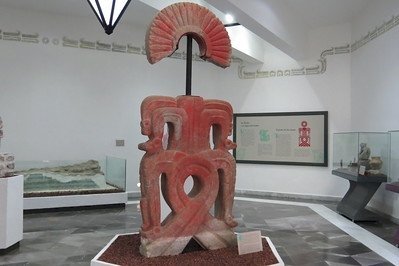
I had planned to visit Xochicalco by public bus but got discouraged after reading that the 38km trip can take up to 1.5 hours and one can only hope to be let off at the entrance gate to the site. As I had a lot of pesos left anyway, I decided to splurge on a taxi that would take me straight from the hotel to the site. So I sat first class in the back of a brand new radio taxi, covering the distance in 40 minutes. The site lies in a barren, hilly area – actually the city was built on top of those hills.
As Paul Tanner has pointed out in his review below, the museum and the entrance to the archeological site are some distance apart. You have to go to the museum first, as that’s where the tickets are sold. Entrance now costs 59 pesos (3,20 EUR). I arrived at 9.30 a.m. and was the only visitor; it would stay that way all 2 hours that I spent there. I believe this area suffers a lot from US visitors staying away because of reports of drug violence in Mexico, I was also the only visitor at my hotel in Cuernavaca – the Hotel Casa Colonial which is recommended everywhere from Lonely Planet to Michelin. The museum itself wasn’t that great, it has only 2 or 3 pieces to remember. For example the “Red Man”:
I then walked uphill to the site entrance, some 500 …
Keep reading 0 comments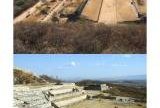
10 out of Mexico’s 27 inscribed sites are pre-Hispanic – Xochicalco isn’t among the “top ranking” but has its interests and is certainly worth visiting if you are in the Cuernavaca area. Non-experts might tend to think of Mexico as being the home of just the Aztecs and Mayas but there were in fact many more different “civilisations” than these, spread over many centuries. Each of the sites demonstrates continuity and development among and across them and also the different social and agricultural etc practices imposed by the wide variety of living conditions across Mexico’s terrain - think 2000 years of Europe from BC to c1500!
Xochicalco dates from around 800 AD and appears to have been primarily religious and ceremonial in purpose. It is particularly noted for its enormous ball court (photo1) with Mayan influences (the “Ball game” had considerable ritual significance in most “Mexican” civilisations) and the Observatory, where caves can be entered to reach a vertical shaft through which the sun shines for 5 weeks on either side of the summer solstice. There are also some fine carvings on the “Pyramid of the Plumed Serpent” linking to both Mayan and Teotihuacan civilisations.
The ticket office (which you must visit first) and museum are set quite a walk down from the site and those with a car should be aware that you can drive up to another car park after getting your ticket/visiting the museum and you will just have to show your ticket at the second entrance …
Keep reading 0 comments
